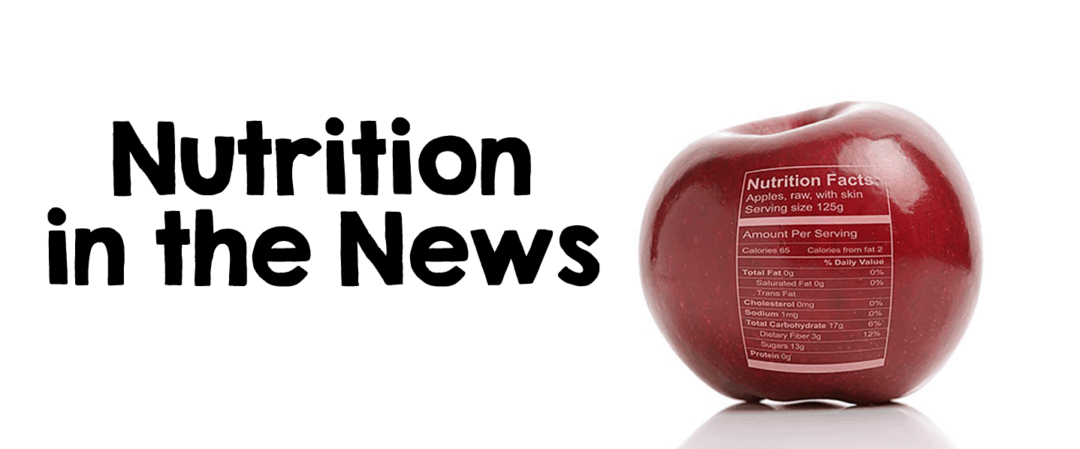
People believe that they need more proteins than they actually do. Look at the labels on packaged foods and you'll see that many of them are full of sugar and artificial color. These foods are often highly processed and contain additives, trans fats and hydrogenated oil. To avoid these food products, substitute them with a healthy alternative. Lean cuts of meat and vegetables are a healthier option.
Another misconception is the belief that foods high on sugar are high calorie. These foods may be delicious, but they can have a negative impact on your health. Many of them are loaded with bad fats and sugar, which can affect your overall health. Vegetables and fruits are high in essential nutrients and fiber. This will ensure your body stays healthy and prevent future illnesses. This is why fruit is so important in a healthy diet.

While these foods may taste great, they are not healthy for your body. These foods can cause you to have unhealthy levels of calories and fats. Choose fruits and vegetables instead. Both of these foods are rich in nutrients. They should be eaten in moderation. These are the best snacks for your health. When you next shop, consider organic foods. They are more nutritious and delicious than traditional foods.
Some fruits, vegetables and other healthy foods are better than others. These include squashes, corn, peas and potatoes. These foods are low in vitamins which makes them not good for your health. These foods can be high in calories so they are not recommended for your daily diet. These foods can be eaten in moderation so you will eat less and be healthier.
Many foods' labels can be misleading. Multigrain bread, for example, may be misleading. This bread must be made entirely from whole grain flours, and it should not contain refined flours. Some "healthy" foods can be loaded with sugar and fat in order to make them delicious. The same goes for popular healthy food products. It is difficult to know the brand and quality of the product.

When choosing healthy foods, remember that there is a big difference between what's labeled as "healthy" and what's not. For example, avocados are a healthy choice, but they're high in fat. Avocados are best eaten one avocado per day. Chocolate and icecream are two other foods that do not sound healthy.
FAQ
What are 10 healthy habits you can adopt?
-
Every day, eat breakfast.
-
Don't skip meals.
-
Maintain a balanced diet.
-
Drink plenty of water
-
Take good care of your body.
-
Get enough sleep.
-
Avoid junk foods.
-
Do some type of exercise daily.
-
Have fun
-
Make new friends
What are the ten best foods to eat in America?
These are the top 10 foods to eat.
-
Avocados
-
Berries
-
Broccoli
-
Cauliflower
-
Eggs
-
Fish
-
Grains
-
Nuts
-
Oats
-
Salmon
What should my weight be for my age and height? BMI calculator and chart
To determine how much weight loss you need, a BMI calculator is your best friend. The healthy BMI range for a healthy person is 18.5 to 24.9. You should lose about 10 pounds each month if you are trying to lose weight. Enter your weight and height into the BMI calculator.
This BMI chart can help you find out if or not you are obese.
Statistics
- Extra virgin olive oil may benefit heart health, as people who consume it have a lower risk for dying from heart attacks and strokes according to some evidence (57Trusted Source (healthline.com)
- nutrients.[17]X Research sourceWhole grains to try include: 100% whole wheat pasta and bread, brown rice, whole grain oats, farro, millet, quinoa, and barley. (wikihow.com)
- In both adults and children, the intake of free sugars should be reduced to less than 10% of total energy intake. (who.int)
- According to the Physical Activity Guidelines for Americans, we should strive for at least 150 minutes of moderate intensity activity each week (54Trusted Source Smoking, harmful use of drugs, and alcohol abuse can all seriously negatively affect your health. (healthline.com)
External Links
How To
What does "vitamin" actually mean?
Vitamins are organic compounds naturally found in food. Vitamins are necessary for us to absorb nutrients in the foods we consume. The body cannot make vitamins; therefore, they must be obtained from food.
There are two types if vitamins: water soluble, and fat soluble. Water soluble vitamins dissolve easily in water. Examples include vitamin C,B1 (thiamine), B2 (riboflavin), B3 (niacin), B6 (pyridoxine), folic acid, biotin, pantothenic acid, and choline. Fat-soluble vitamins are stored in the liver, fatty tissue and kidneys. Vitamin D, E, K and A are some examples.
Vitamins can be classified according to biological activity. There are eight major vitamin groups:
-
A – Essential for normal growth, and the maintenance of good health.
-
C is important for nerve function and energy production.
-
D - Essential for healthy teeth and bones.
-
E - needed for good vision and reproduction.
-
K - required for healthy muscles and nerves.
-
P – vital for building strong bones.
-
Q – aids digestion of iron and iron absorption
-
R - Required for red blood cell production
The recommended daily allowance for vitamins (RDA) varies based on gender, age, and physical conditions. RDA values are set by the U.S. Food and Drug Administration (FDA).
For example, the RDA for vitamin A is 400 micrograms per dayfor adults 19 years or older. However, pregnant women need 600 micrograms per day because it is important for fetal development. Children ages 1-8 require 900 micrograms per day. Babies under one-year old require 700 mg per day. Between 9 and 12 years of age, however, this drops to 500 mg per day.
Children between the ages 1--18 years old who are overweight or obese require 800 micrograms per Day, while those who are overweight or obese need 1000 micrograms. To meet their nutritional needs, children underweight and obese require 1200 micrograms a day.
Children ages 4-8 years who have been diagnosed with anemia need 2200 micrograms per day of vitamin C.
2000 micrograms per person is necessary for general health. Because of their higher nutrient needs, women who are pregnant or nursing need 3000 mg per day.
Adults over 70 need 1500 micrograms daily, as they lose 10% of their muscle every ten years.
Women who are pregnant and lactating need more nutrients than the RDA. Pregnant women require 4000 micrograms daily during pregnancy, and 2500 micrograms every day after birth. Breastfeeding mothers need to consume 5000 micrograms every day when breastmilk has been produced.